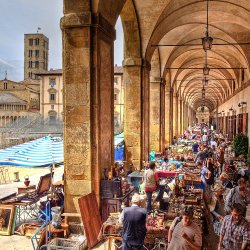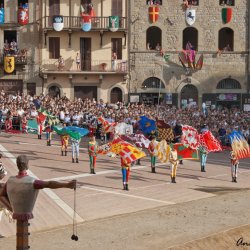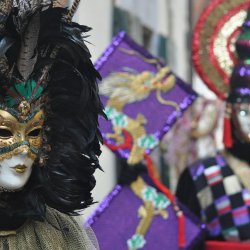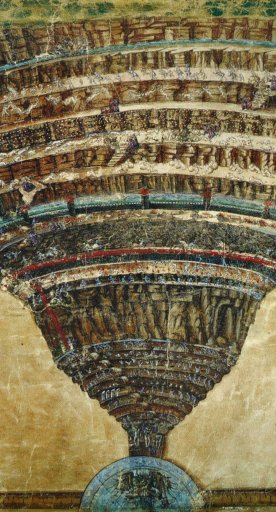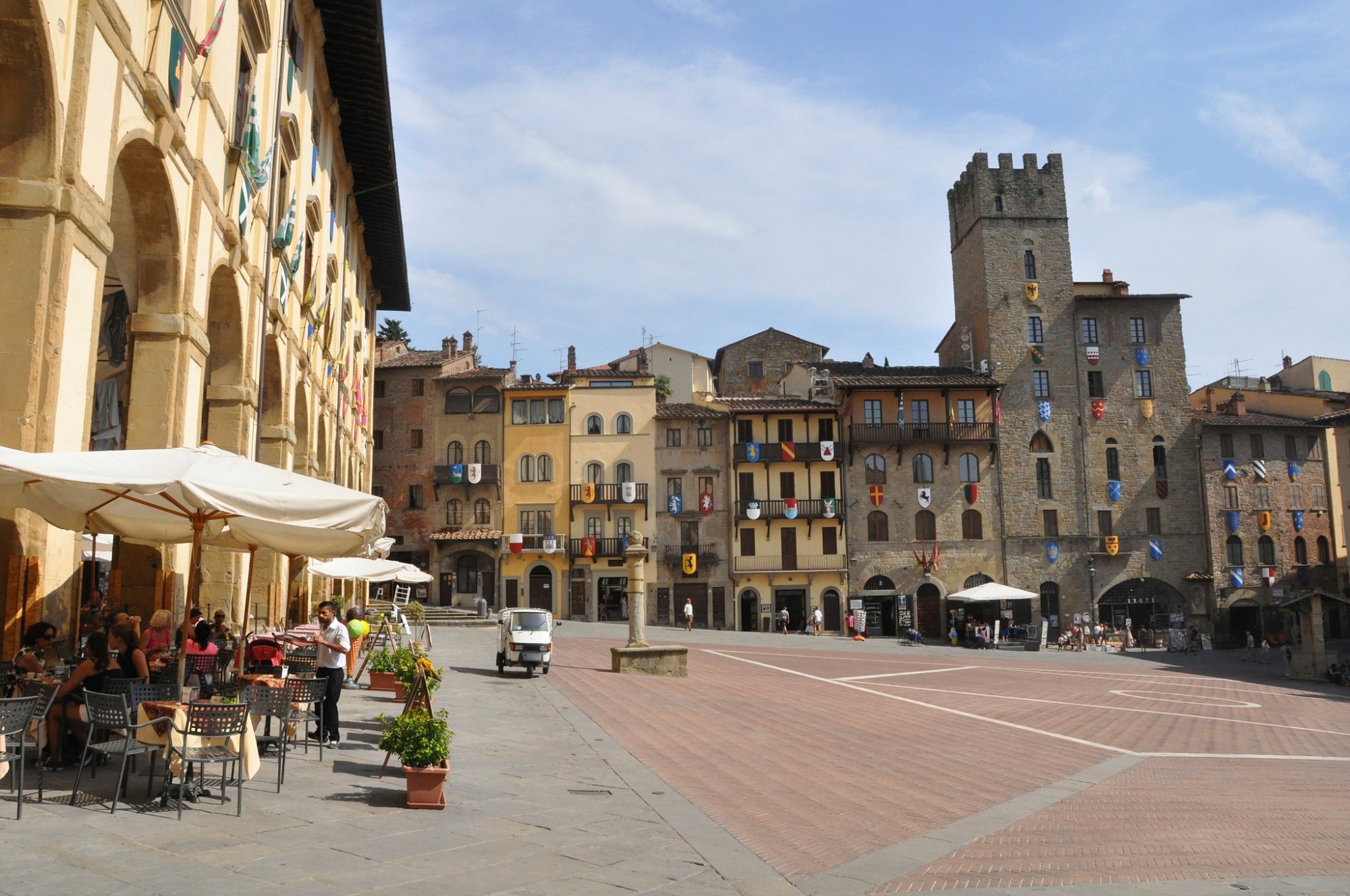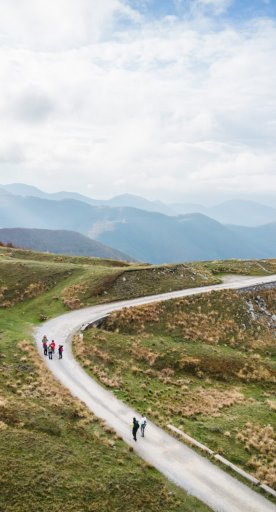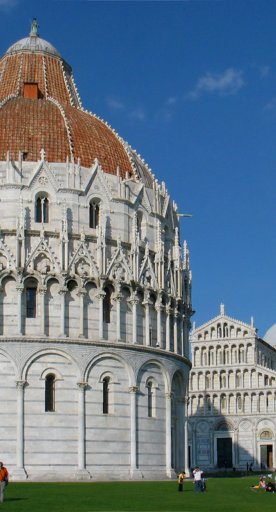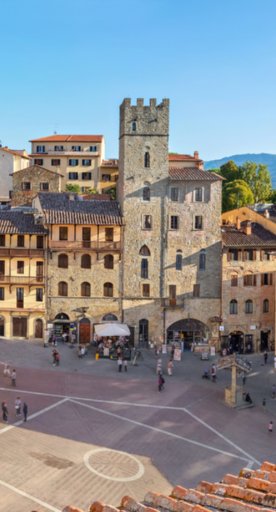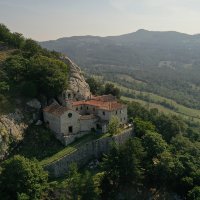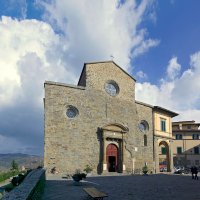Between sacred and profane. Stories of miracles and bandits on the Via Romea Germanica
Among the towns and woods along the Romea Germanica you can search for ancient miracles, or follow the trail of romantic outlaws
Since the Middle Ages, Tuscany has been crossed by the steps of northern European pilgrims, who made their way to Rome through lush forests, characteristic villages, and cities of art, following what would later become known as the Via Romea Germanica. This ancient path, linking Stade to Rome, runs for more than 2,000 km between Germany, Austria and Italy, intersecting with the Via Francigena in the final stages of the journey.
In Tuscany, the Romea Germanica penetrates the territories of Arezzo and Cortona: it is precisely these places that witnessed the events that have taken place over the centuries, and still preserve fascinating tales and legends, including miracles, apparitions and dangerous bandits.
-
1.In holy places, where man met the divine
-
2.Unlawfulness, between smuggling and banditry
In holy places, where man met the divine

The Via Romea Germanica enters Tuscany through lush territories where the Casentino forests thrive. Centuries-old trees guard places cloaked in spirituality, such as the Sanctuary of La Verna, whose stones witnessed the famous miracle of St. Francis' stigmata.
Along the route, which can be reached with a short detour from the trail in the direction of Bibbiena, stands the Sanctuary of Santa Maria del Sasso, a Renaissance religious complex built on a small church dating back to the mid-1300s, following a miraculous event. Tradition has it that, in 1347, Our Lady appeared to a local girl and gave her some pods, which turned out to be full of blood. The following year, the swine fever epidemic spared Bibbiena and its surroundings: the pods were interpreted as a divine sign of protection, and an oratory was built near the site of the miracle. Over time other apparitions followed, and more rooms were added to the oratory, until the shrine was given its present appearance, the result of works carried out in the late 1400s.

Another place with a miraculous past is located in Cortona, along the last stretch of the Tuscan stages: it is the Sanctuary of Santa Maria delle Grazie al Calcinaio, a Renaissance building linked to an effigy of the Madonna with Child who, on Easter Sunday in 1484, began to work miracles. Placed on the wall of a leather-tanning basin, the holy image immediately became an object of veneration, and it was decided that a temple - the present sanctuary - should be dedicated to her. The temple still preserves the effigy above the high altar, where it can be admired.
Unlawfulness, between smuggling and banditry

In addition to preserving the memory of past centuries, forests and towns also recall a more recent past, populated by bandits and dangerous smugglers.
In the 1800s, illegal and criminal activities spread between Casentino and the city of Arezzo. In Chitignano, a few kilometers beyond Santa Maria del Sasso, the Museo della polvere da sparo e del contrabbando (Museum of Gunpowder and Smuggling) tells of some activities that thrived far beyond the limits of legality: the tobacco trade and gunpowder production in the Casentino managed for a long time to escape the control of local laws, and their smuggling spread throughout the area. A number of "large stumps," used for the beating of gunpowder components, can still be found in the forests, the largest of which can be reached by a route suggestively called the “Powder Keg of Hell”.

Arezzo and its surroundings were not spared by the phenomenon of banditry, which spread as rapidly as smuggling. In these areas the figure of the bandit Gnicche remained symbolic who, for a long time, made headlines. His reputation as a cruel criminal, thief and gambler mixed with the romantic image of the rebellious gentleman, surrounded by lovers and never lacking in elegance.
Among the episodes that most characterize Gnicche's life and character are those that recall him disguising himself as a woman to sneak into parties, or the one in which, fatally injured, he congratulated the armiger who had been so accurate in his aim as to hit him.
Gnicche's fame has always been shrouded in considerable fascination: tales and sayings were born about him, and even a comic strip written by Francesco Guccini. Even today, along a dirt road that winds just outside Arezzo, one can go looking for the Torre di Gnicche (Gnicche's Tower), a small stone structure said to have been one of his many hiding places.

